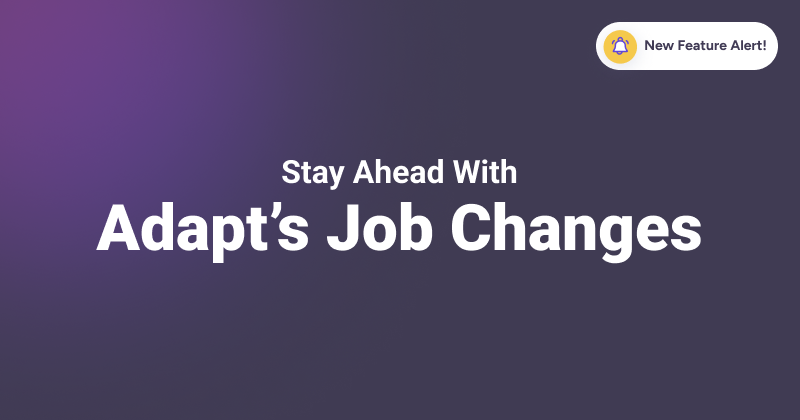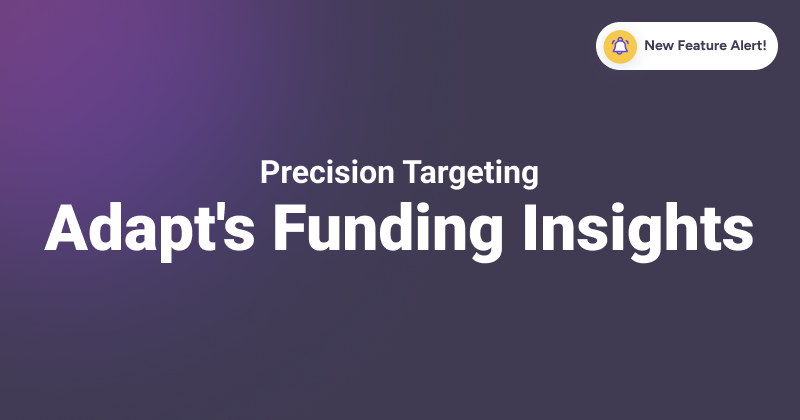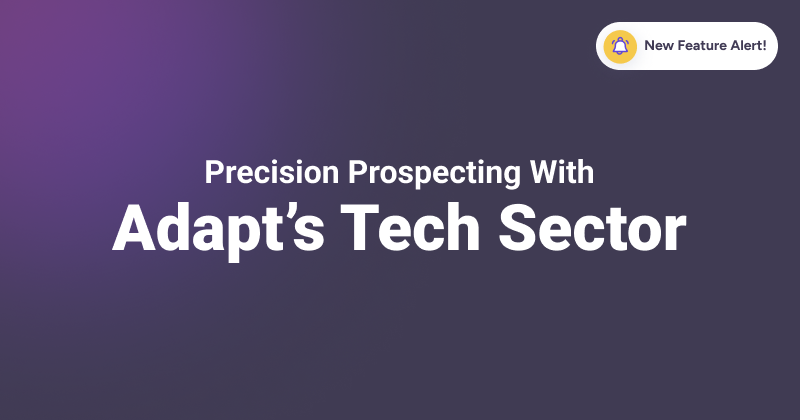Imagine this:
You’re the head of the B2B sales and marketing team working to achieve annual revenue targets and drive business growth.
You’ve got a list of leads that you obtained either through buying B2B email lists or other lead generation efforts but the leads aren’t driving as much conversions for your marketing campaigns as expected.
After scrutinizing your leads thoroughly, you notice that you’re lacking some important information that’s preventing you from running personalized marketing campaigns.
Your CRM is filled with incomplete or inaccurate data about potential customers. In other words, you’re facing a poor data quality situation.
The consequences of working with poor-quality data can be disastrous to your business. It can hinder personalization, lead to poor customer relations, and poor decisions, affecting overall sales team performance.
According to Gartner, the impact of bad data costs organizations around $13 million per year.

Source: Gartner
This is where lead enrichment comes in.
Essentially, the goal of B2B lead enrichment is to add additional details to the information you already have on potential leads to prevent data inconsistencies. It’s the key to clean, accurate, up-to-date, and reliable lead data that means more wins.
In this in-depth guide, we’ll delve into lead enrichment, understand its meaning, benefits to the sales team, and how tools can help simplify the whole sales process.
Let’s get started.
What is Lead Enrichment?
Lead enrichment is a strategic sales process in which businesses enhance their existing marketing leads by collecting, organizing, and analyzing data with additional insights.
The goal is to create more detailed ideal customer profiles, enabling businesses to personalize their marketing and sales efforts effectively.
B2B lead enrichment goes beyond simple contact information, providing the sales rep with a deeper understanding of leads, their industry, company sizes, technology usage, engagement history, and more.
The different types of lead enrichment data used by B2B sales and marketing teams can include:
- Firmographic enrichment data: Company sizes or structure, industry, revenue, funding information, location, etc.
- Geographic data: Country, state, city, etc.
- Technographic data: Technology stack a company uses, including software, hardware, and applications—their current use, implementation details, and adoption rates.
- Demographic data enrichment: Age, income, gender, job description and title, educational level, etc.
- Intent data: Also known as purchase intent data, it includes content consumption, web searches, engagement, social media interactions, etc.
- Psychographic data: Values, interests, and personality traits.
Why Is Lead Enrichment the Key to Your B2B Success?
In today’s data-driven business world, high-quality data is the lifeblood of B2B marketing. It forms the foundation of successful sales and marketing campaigns.
According to Marketing Charts, data quality is cited among the top challenges hindering B2B sales and marketing teams from providing a great customer experience:

Source: Marketing Charts
By enriching leads with deeper insights about potential prospects, your sales representatives can uncover leads with a higher likelihood of conversion and develop personalized messaging that resonates with them.
And that’s not all.
Here are the benefits an effective lead enrichment and generation process can bring to your business
- Laser-Focused Targeting: According to research, identifying target audiences/accounts is one of the most critical challenges preventing B2B marketers from launching effective marketing strategies:

Source: Marketing Charts
An effective lead enrichment process allows your market teams to precisely target their ideal audience, tailoring marketing messages and strategies for maximum impact.
- Mitigates Data Decay: Business data is dynamic and subject to constant changes. According to the Direct Marketing Association, 31% of email users change their email addresses every year.
Regular lead enrichment process addresses challenges such as job title changes, company relocations, and personnel shifts, preventing businesses from basing informed decisions on outdated or incomplete information.
- Improved Personalization: Personalization directly influences buyer behavior across the customer journey. A McKinsey & Company survey shows that 76% of
consumers will likely buy from brands that personalize:

Source: McKinsey & Company
Having enriched leads enables your sales team to create highly personalized messaging, enhancing the customer experience, and building stronger connections.
- Better Decision-Making: It equips B2B companies with the deeper insights needed to make informed decisions, whether it’s entering new markets, refining product offerings, or adjusting marketing approaches.
The enriched data provides a holistic view of the market landscape, empowering businesses to stay competitive and adaptive in a dynamic business environment.
Strategies for Effective Lead Enrichment
Beyond just collecting data, enriching leads effectively requires strategic implementation. Here are some effective marketing strategies to maximize the impact of your enrichment efforts:
1. Define enrichment goals
Clearly identify key business objectives with enriched data. Are you aiming for better personalization, improved lead scoring, or identifying promising prospects?
Tailoring data collection and usage to specific goals ensures you gather the most relevant information.
2. Understand your ideal customer profile (ICP)
Having a clear understanding of your ideal customer profiles allows you to filter and prioritize data that best describes them. This avoids enriching leads with irrelevant details, saving time and resources.
3. Segment and personalize based on enriched data
Leverage the collected data for customer segmentation to organize your leads into distinct groups based on demographics, interests, or buying stage. This enables you to personalize messaging and campaigns for each segment, increasing engagement and conversion rates.
4. Integrate with marketing automation tools
Streamline enrichment by connecting external sources of data with marketing automation platforms. This automates tasks like data cleansing, merging data points, and triggering personalized content based on specific criteria.
5. Utilize data enrichment tools
Consider specialized B2B data enrichment platforms to automate processes, enhance data quality, and gain a deeper understanding of your leads. These platforms often offer features like data verification, intent signals, and predictive lead scoring.
How to Collect Data for Enrichment (methods, tips and tricks)
Collecting data for enrichment involves a combination of methods, tips, and tricks to ensure accuracy and relevancy.
Here are popular data collection methods for B2B:
1. Web scraping
Utilize web scraping tools to automate the extraction of relevant data from various online sources including company websites, social media profiles, and online directories.
The method can help you gather information on companies, key personnel, job titles, and basic contact details.
Must mention that this data collection method is only effective for public records. Furthermore, you can get into serious legal trouble if you fail to comply with terms of service and legal regulations while scraping data.
2. Leverage data providers
Leverage external third-party sources like third-party data providers that specialize in gathering and selling business-related information to supplement your existing data.
These providers can offer comprehensive datasets with details such as company size, revenue, email lists, and industry. Besides, most of them offer data enrichment tools.
Here are key factors to consider when choosing a data provider as per the recent Anteriad’s data:

Source: Anteriad
Also, ensure the data from your enrichment provider aligns with your target audience and business goals.
3. Leverage social media monitoring
Monitor social media platforms to gather deeper insights into a company’s activities, updates, and changes. Professional networking sites like LinkedIn or Twitter can provide valuable information about key decision-makers and industry trends.
Engage in conversations to understand your leads better.
5. Utilize lead capture forms
Create targeted landing pages and offer valuable content (eBooks, white papers, etc.) in exchange for lead information like name, email, job title, and more.
You can also leverage website pop-ups and banners to capture visitor attention at strategic points with lead magnets tailored to specific audiences.
6. Utilize surveys and questionnaires
Create surveys or forms that collect specific information directly from potential leads. This method can provide specific details about their needs, challenges, and preferences.
Offer incentives to encourage participation and ensure data accuracy.
Here are practical tips and tricks for effective data collection:
- Define data points: Clearly define the data points you need for effective lead collection and enrichment based on your business goals.
Prioritize the collection of information crucial for personalization and segmentation.
- Ensure privacy and compliance: Adhere to data protection regulations and privacy policies while collecting and handling lead data. According to a recent KPMG survey, 86% of respondents say data privacy is a growing concern for them. Clearly communicate your data usage practices to build trust with leads.
- Leverage automation wisely: Embrace automation tools for data collection to improve efficiency through automated workflows, making sure to leverage human oversight to ensure the quality of collected data.
Challenges in Lead Enrichment
Various challenges can impact the effectiveness of lead enrichment. Here are a few you need to know to ensure your data is enriched successfully:
1. Data accuracy
Achieving and maintaining data accuracy is a constant challenge in B2B lead enrichment that’s preventing businesses from making real data-driven and informed decisions.
Inaccurate information can lead to misguided marketing efforts, wasted resources, and compromised decision-making.
The dynamic nature of business data requires vigilant efforts to ensure the precision of the enriched lead dataset, demanding regular updates and validation processes.
2. Data completeness
Obtaining comprehensive company data is crucial for enriching data effectively. However, businesses often face the challenge of incomplete information provided by leads.
Limited data points hinder the depth of enrichment, impacting the ability to create a holistic profile. To overcome this challenge, businesses should balance the need for thorough enrichment with respecting lead privacy.
3. Data decay
Data decay, also known as data degradation poses a significant challenge as business information undergoes constant changes.
Staying up-to-date on updates, job role changes, and company relocations is vital to prevent relying on outdated data, ensuring the relevance and accuracy of the enriched leads over time.
4. Privacy and compliance
Another challenge in enriching leads in B2B industries is adhering to stringent data protection regulations, such as GDPR.
According to a Gartner report, 65% of the world’s population has its personal data covered under modern privacy regulations. Besides, failing to comply with GDPR can lead to serious penalties and fines.
For this reason, it’s important to constantly balance the need for detailed information with respecting data privacy laws—by obtaining explicit consent from leads to ensure compliance and ethical data handling.
5. Multiple data sources
Ideally, businesses collect data either internally or purchase it from third-party sources.
Integrating data from diverse external sources can be another complex challenge.
Varying data formats, structures, and quality standards across platforms demand sophisticated integration solutions.
Furthermore, harmonizing this diverse data into a standardized format for effective lead enrichment requires strategic planning and advanced technological capabilities.
6. Managing large datasets
The sheer volume of data involved in lead enrichment processes poses logistical challenges. Handling large datasets efficiently requires robust data management infrastructure and practices to prevent bottlenecks, ensure accessibility, and maintain data integrity.
Why Continuous Check Is Required for Effective Lead Enrichment?
Granted, continuous checks are imperative in lead enrichment to ensure the relevance, accuracy, and effectiveness of the enriched data over time.
Several factors contribute to the necessity of ongoing verification and updates:
- Data decay: Over time, data naturally decays due to factors like job role changes, company rebranding, or outdated contact information. Regular verification processes combat data decay, maintaining the accuracy and reliability of the enriched lead dataset.
- Regulatory compliance: Data protection regulations, such as GDPR, emphasize the need for accurate and up-to-date information. Continuous checks help businesses stay compliant with these regulations, mitigating the risk of using outdated or non-compliant data.
- Prevention of wasted resources: Without continuous checks, businesses risk allocating resources to leads that may no longer be viable. Regular updates help optimize resource allocation by focusing enrichment efforts on leads with the highest potential for driving conversion rates, preventing wasted time and resources.
How Tools Can Help Simplify Lead Enrichment
Various marketing tools and platforms play a crucial role in simplifying lead enrichment in the B2B space. These tools are designed to automate and streamline the process, making it more efficient and effective.
Here are several ways in which tools can simplify the lead enrichment process:
1. Automated data collection and verification
Lead enrichment tools automate the data collection and verification process, systematically gathering information from various sources. This eliminates the need for manual work and ensures accuracy and efficiency in acquiring relevant details about leads.
2. Real-time updates
These marketing tools provide real-time data enrichment. Continuous monitoring and immediate incorporation of changes, such as job title adjustments or company relocations, keep the dataset accurate, relevant, and reflective of the latest information.
3. Multi-channel integration
Lead enrichment tools offer native integrations with various apps and platforms, such as CRM systems and marketing automation tools. This integration facilitates centralized data management, providing a unified view of enriched leads and supporting cohesive marketing and sales strategies.
4. Customizable enrichment criteria
Most enrichment tools allow businesses to tailor the criteria used for lead enrichment based on their specific goals. Besides, they offer customization options, allowing organizations to focus on the data points most relevant to their industry, target audience, and marketing objectives.
5. Robust segmentation
These tools facilitate efficient segmentation by categorizing qualified leads based on various criteria. This segmentation supports personalized marketing campaigns, allowing businesses to tailor their messages to specific segments, increasing the relevance of their communications.
Adapt.io – Your Ultimate Lead Enrichment Solution
Without the right tool, collecting, organizing, and analyzing data relevant to your prospective customers can be a complex task. Besides, most marketing tools on the market today lack sufficient features that support the entire lead enrichment process.
Adapt.io stands out as the powerful lead enrichment solution for businesses seeking a comprehensive and user-friendly platform to enhance their B2B lead data.

Some of its key strengths include:
- Robust automated data collection capabilities: Adapt.io employs advanced algorithms to systematically gather information from diverse sources, ensuring the accuracy and relevance of enriched lead data. These automation processes not only save valuable time for your sales team but also minimize the potential for human error in the data collection process.
- Real-time updates: This is another distinctive feature of the platform providing businesses with the latest information about leads. This feature ensures continuous monitoring and immediate incorporation of changes, such as job title adjustments or company relocations, leading to a dynamic and up-to-date dataset.
- Customizable enrichment criteria: Allows businesses to tailor lead enrichment processes based on their specific industry, target audience, and marketing objectives. The user-friendly interface further enhances its appeal, providing an intuitive platform for users with varying technical expertise to navigate easily.
Overall, Adapt.io’s combination of robust capabilities and powerful features position it as the simple solution for businesses aiming to optimize their B2B lead data and drive more effective marketing and sales initiatives.
Sign up for a 7-day free trial here!
FAQs
Useful lead enrichment data includes company details (size, industry, location), contact information (email, phone), social media profiles, job roles, and any additional insights that help create a comprehensive profile.
Behavioral enrichment data, such as website interactions and engagement history, is also valuable for understanding leads’ preferences.
Lead enrichment can be automated using specialized tools and platforms that integrate with CRM systems. These tools leverage APIs, web scraping, and data sources to update and enhance lead information automatically.
Automation reduces manual efforts, ensures real-time data updates, and integrates enriched data seamlessly into existing workflows.
Automating lead enrichment is crucial for efficiency and accuracy. It saves time, reduces errors associated with manual data entry, and ensures that lead information is consistently up-to-date. Automation also enables businesses to handle large datasets, focus on high-priority leads, and integrate enriched data seamlessly into their sales processes.


